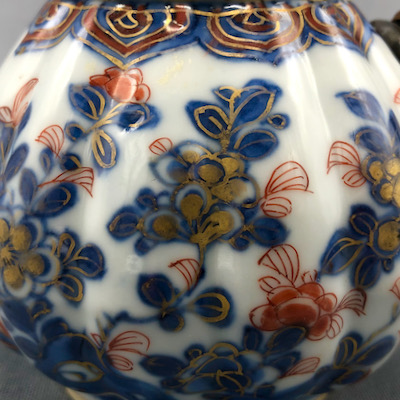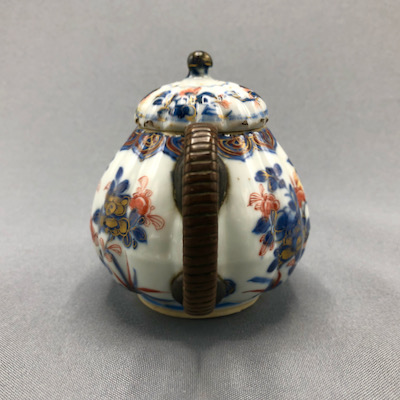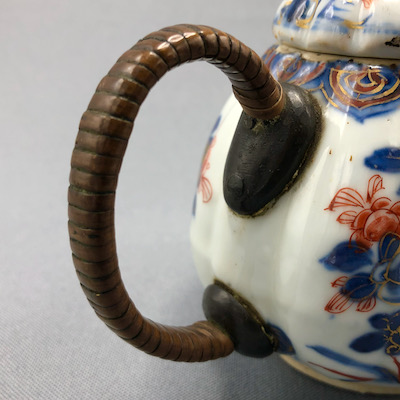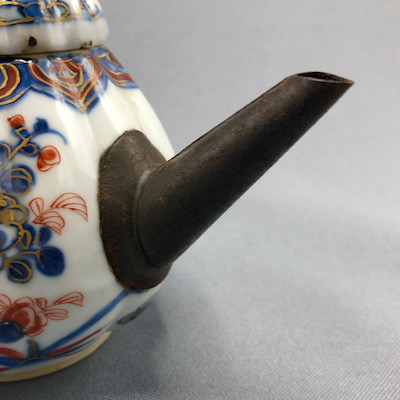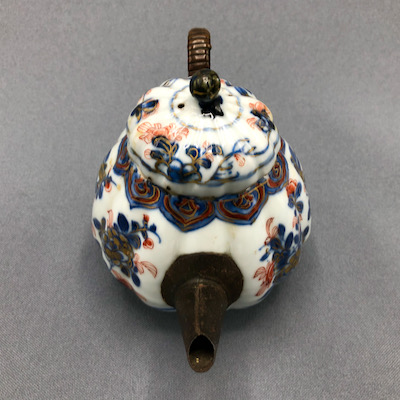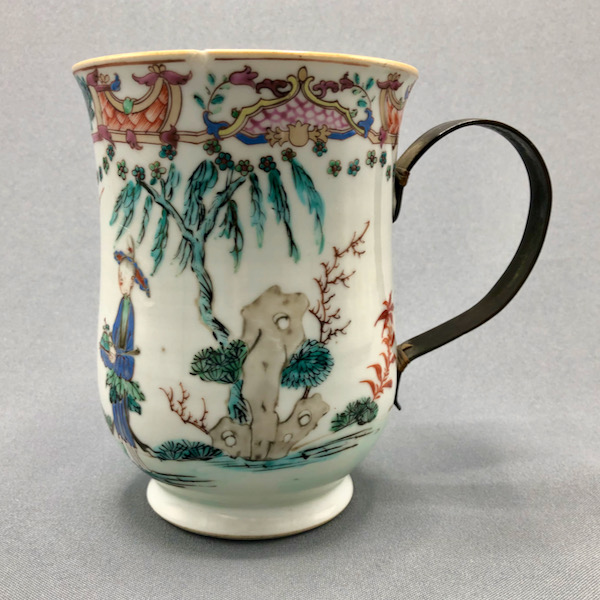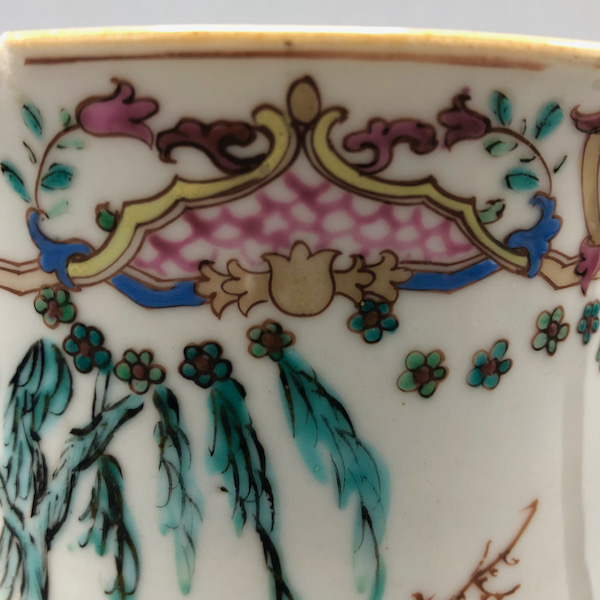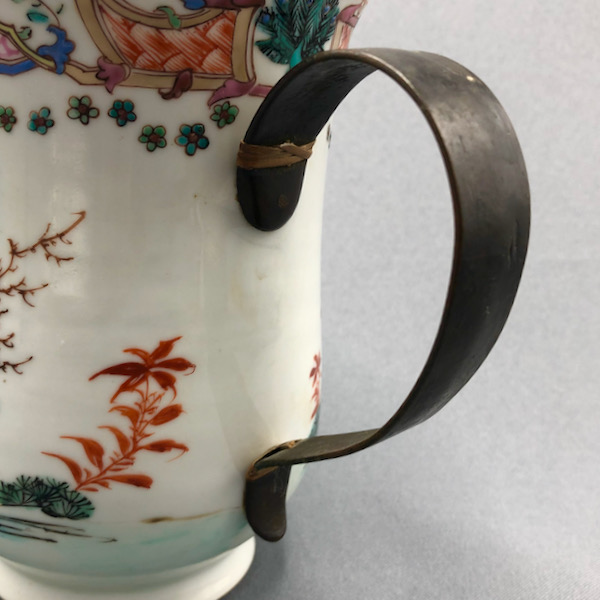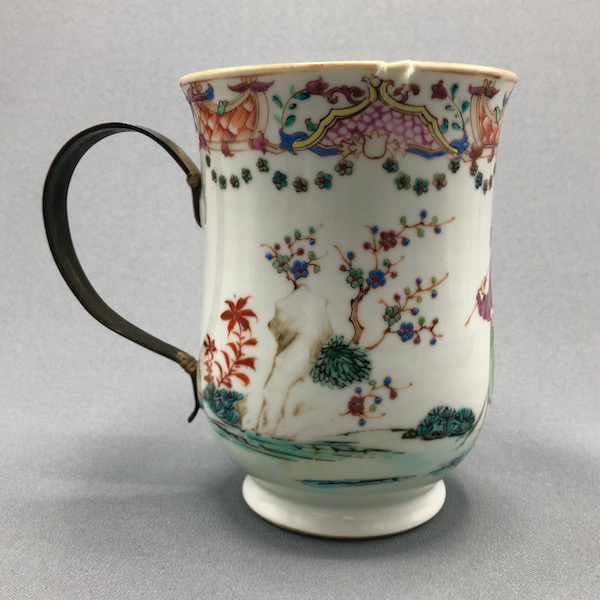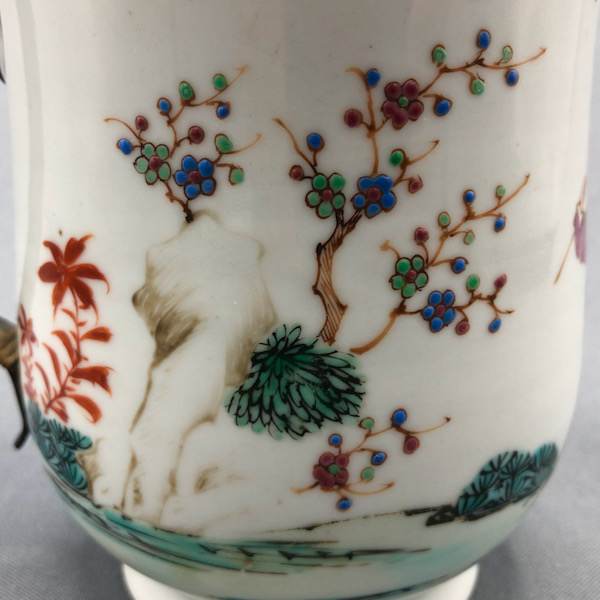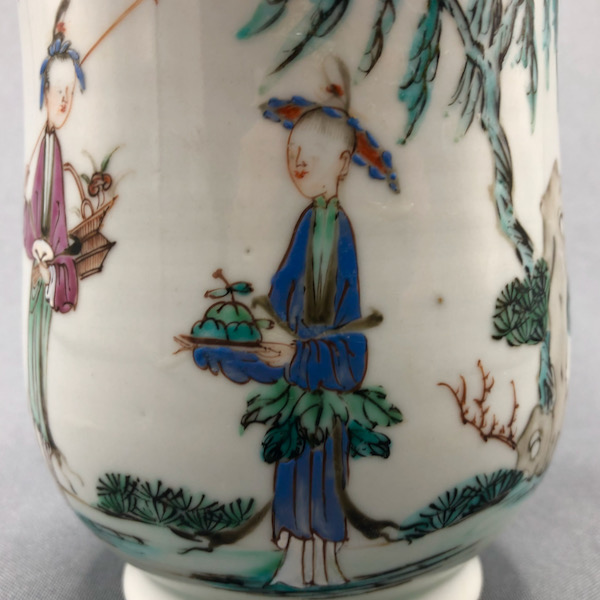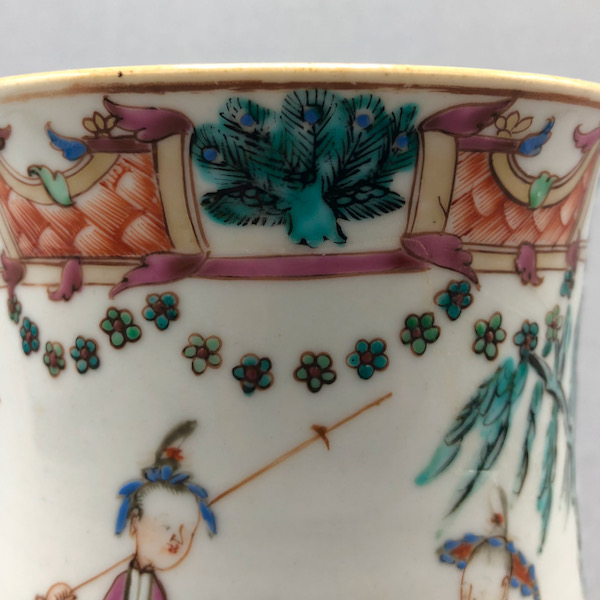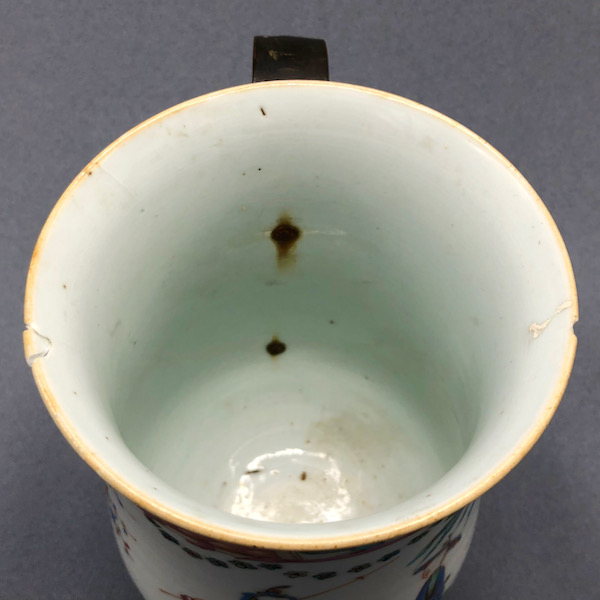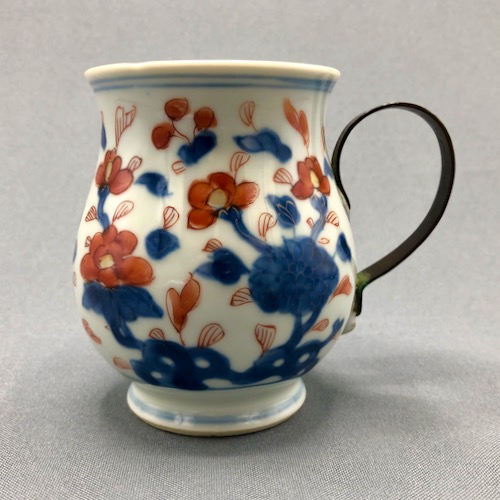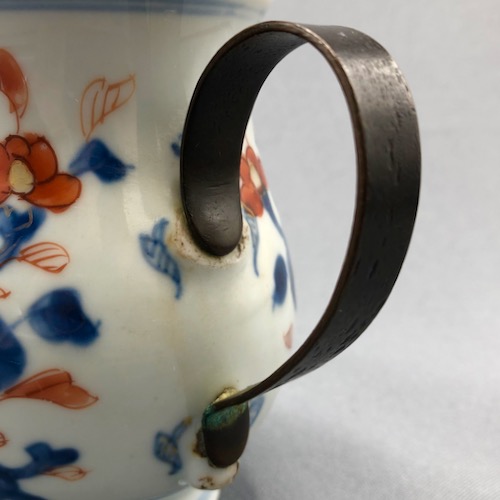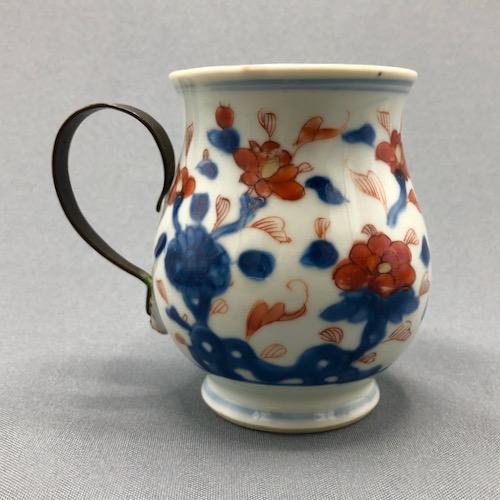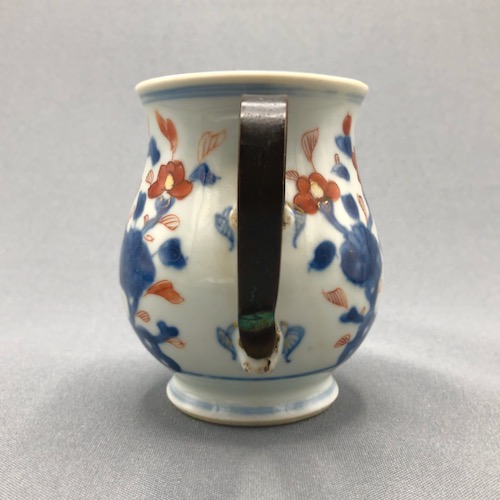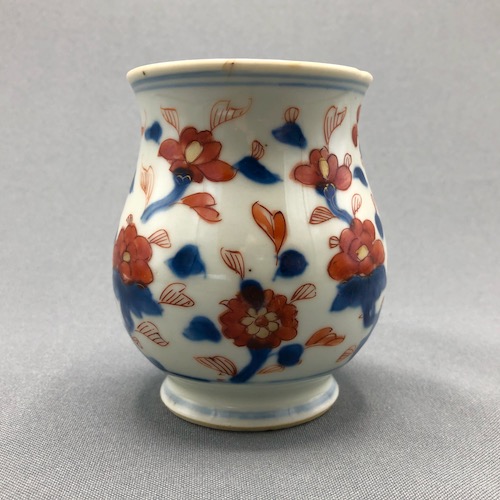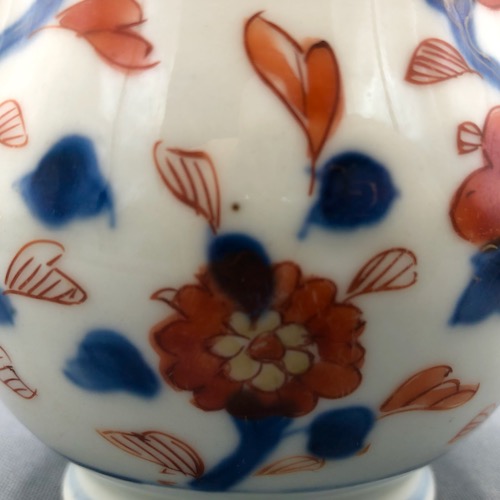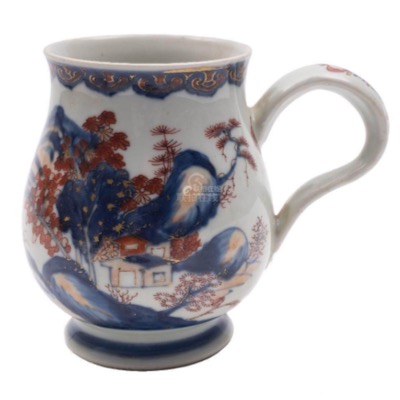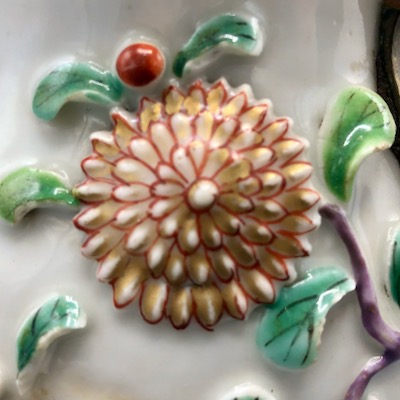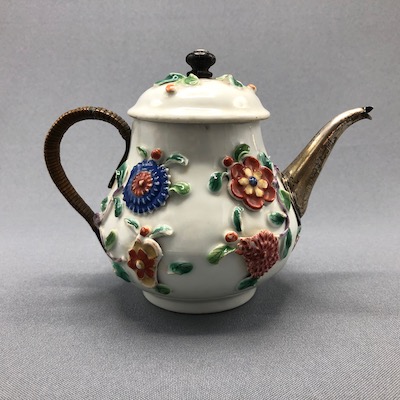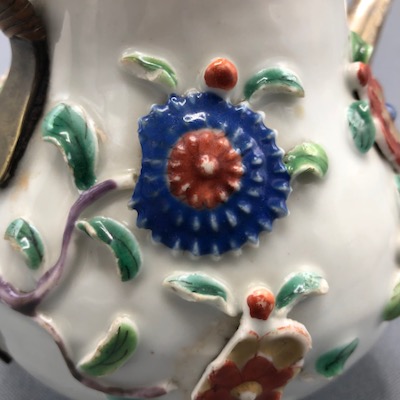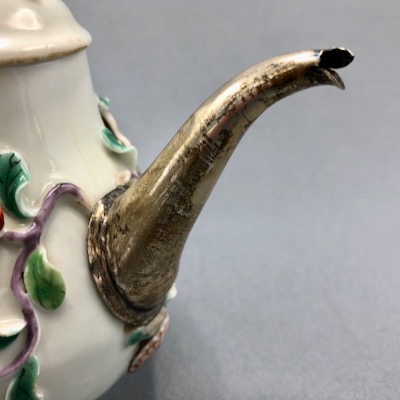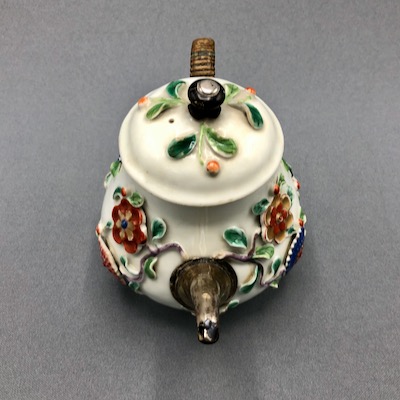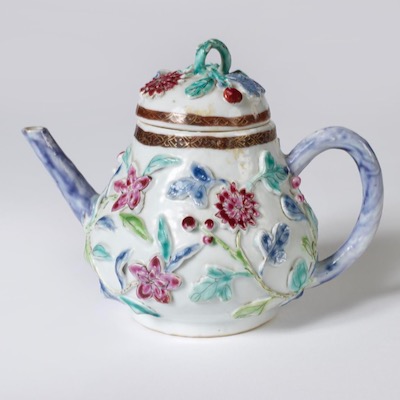Posts Tagged ‘bronze’
Sunday, September 24th, 2017
This porcelain dish was made in China for export to Europe in the middle 1700s. It is decorated with figures in blue, red, green, and black enamels and measures 8 inches long, including the mount, with a diameter of 4.25 inches.
Not only was this dish repaired on the underside using 4 metal staples, each .25 inches long, but a fragment from another piece was added to the ornate bronze rococo mount. Please take a look at an earlier post with a similar porcelain dish and bronze mount: Kanji period dish, c.1700.


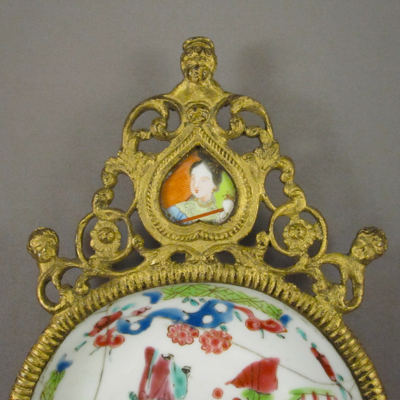
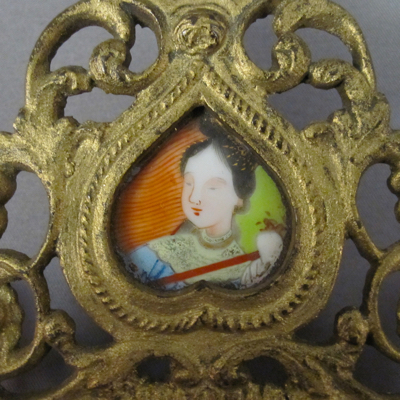


Tags:bronze, Chinese, porcelain, staples/rivets
Posted in plate/platter | No Comments »
Saturday, May 28th, 2016
This elongated Baroque serpentine form silver shape sauce boat was made in China during the Qianlong period (1736-1796). It is made of porcelain and decorated in the Famille Rose palette, with hand painted flowers, ducks, and garden stools in pink, green, blue, and white enamels with gilt highlights. It measures 9-3/4 inches long by 3-5/8 inches high.
Well over 150 years ago when the original simple loop handle snapped off, a “china mender” fashioned a replacement handle, which was riveted to the body. To help insulate the metal from the hot contents, rattan was wrapped and woven around the handle. This would have been one of a pair of matching sauce boats and was a part of a large dinner service. I wonder if it was separated from its mate and other “perfect” serving pieces, as was often the case.
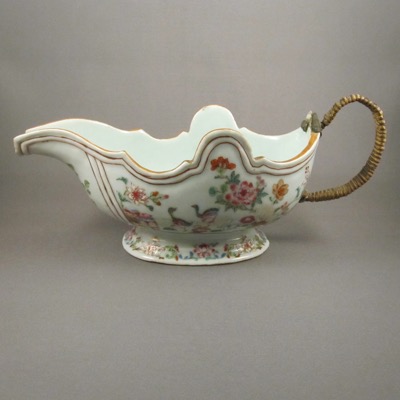





The original handle on this sauce boat, with identical form and similar decoration, gives you an idea of what the handle on my sauce boat would have looked like.
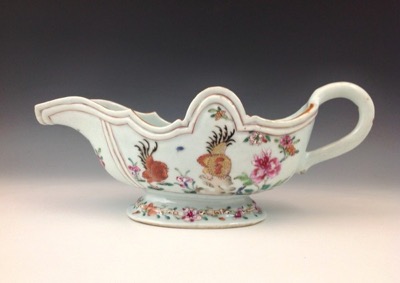
Photo courtesy of Online Galleries
Tags:bronze, Chinese, metal handle, porcelain, rattan
Posted in sauce boat | No Comments »
Saturday, April 23rd, 2016
This porcelain baluster form cream jug with sparrow beak spout has floral decoration painted with polychrome enamels in the Famille Rose palette. It was made in China, circa 1760, and measures 4.5 inches tall.
After the original porcelain handle broke off, a rattan-wrapped bronze replacement handle was added. The missing patch of woven rattan reveals a bent section of bamboo just under the handle which was added to help cushion the bare metal. The tactile ridges in the rattan also make the handle easier to grip.





This jug of similar form shows what the original handle and lid might have looked like on mine.

Photo courtesy of De Franse Lelie
Tags:bronze, Chinese, metal handle, porcelain, rattan
Posted in jug | No Comments »
Saturday, April 25th, 2015
I am back in London for a brief visit on my way to Ireland and the very first thing I did upon arrival was to head over to see the magnificent ceramics collection at the Victoria & Albert Museum. I could spend an entire day peering into the endless floor to ceiling glass cases filed with worldwide and world-class ceramics. Here are some of my favorite examples of inventive repairs found among the collection.

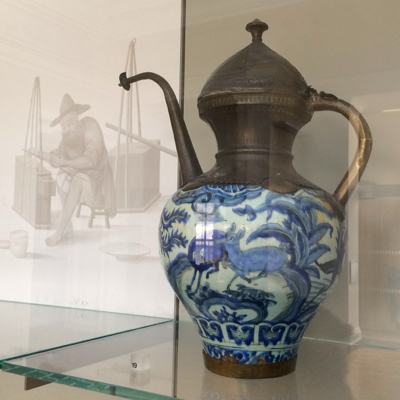

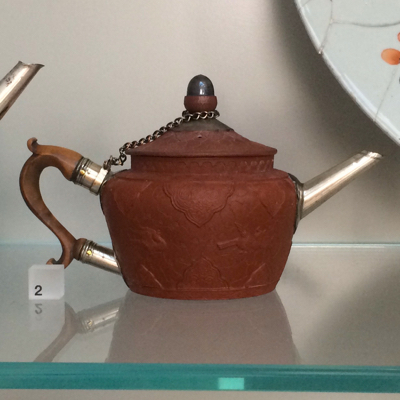

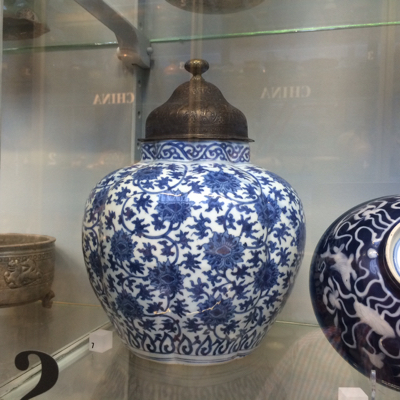

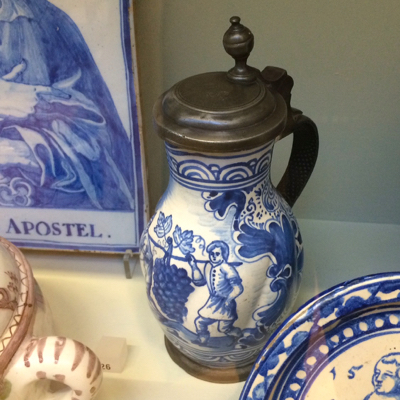
Take a look at this previous post from just over a year ago, showing other examples from the collection.
Tags:blue & white, brass, bronze, Chinese, metal handle, porcelain, pottery, silver, staples/rivets
Posted in anecdotal | No Comments »
Saturday, April 11th, 2015
Earlier this week I took a stroll through one of my favorite spots in Manhattan, The Henry R. Luce Center for the Study of American Art at The Metropolitan Museum of Art. If the Smithsonian Museum is known as “The Nation’s Attic”, then I’d like to christen the Luce Center “The City’s Yard Sale” as it is packed from floor to ceiling with glass showcases filled with over 18,000 tchotchkes, including Tiffany lamps, Shaker boxes and Revere silver. This impressive collection of the museum’s overflow allows the public to research and take a peek into the MET’s closets. If you look closely among the rare Chinese porcelain and early English pottery you will find dozens of pieces in various states of disrepair including visible cracks, chips, worn paint and missing parts.
Here are some of my favorite make-do’s, all hoping to one day escape the confines of the study center’s curio cabinets and be placed alongside their more presentable friends in the “big house.”
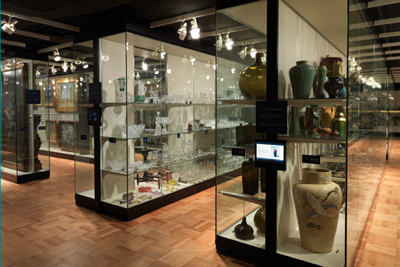




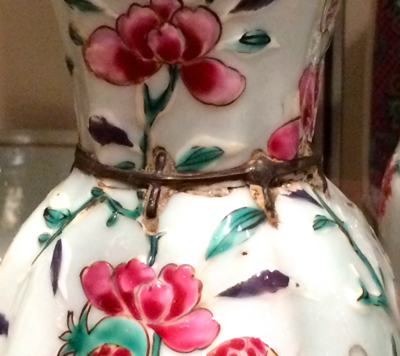





Tags:blue & white, bronze, Chinese, English, glass, metal base, metal handle, porcelain, pottery, staples/rivets
Posted in anecdotal | 2 Comments »
Sunday, August 3rd, 2014
This Chinese baluster shaped porcelain jug, with molded spout in the manner of European silver, has hand painted underglaze cobalt blue Nanking decoration of houses, trees and birds. It dates from the middle of the 18th century and stands nearly 8″ tall.
Over 100 years ago when the original reeded strap handle broke off, an unusual split form metal replacement handle was added. A clever tinker reinterpreted the original handle design by forging a bronze loop handle into four extensions and adding small discs, which were riveted to the leaf terminals. The remains of an intricately woven rattan sheath are found on about one third of the handle. Most curiously, there is an engraved signature on the underside, difficult to decipher, which may be the name of the china mender or of a previous owner. If anyone knows more about this marking, please let me know.







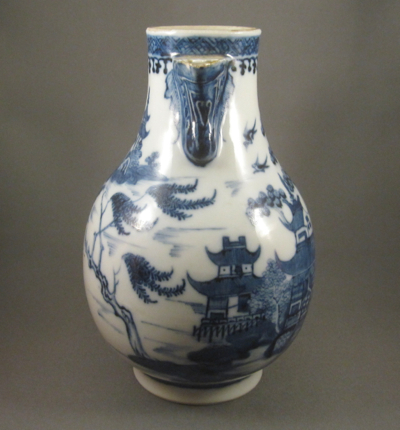

This jug with similar form and decoration shows what the original handle on my jug may have looked like.

Photo courtesy of eBay
Tags:blue & white, bronze, Chinese, metal handle, porcelain, rattan
Posted in jug | 2 Comments »

